Bird Notebook Pages
$3.99
Use the spaces provided for recording taxonomy as well as your observations. The black and white format and minimal color makes printing affordable and allows for adding color and personalization as your child fills in each page. Choose from 48 bird pages by common name. Select the right page based on the most specific classification in common. You can use these pages for birds in the same family or even genus. When a bird page can’t be found for a particular species, use one of the 30 additional blank pages provided. 78 total note booking pages! This is a PDF digital download product.
Description
*This page contains affiliate links.*

Packed full with 48 birds by common name these bird notebooking pages include space for drawing a sketch of the bird’s egg and stages of development or making notes of its characteristics.
These pages also offer space specifically designated for recording taxonomy as well as diet, behavior, and habitat. Extra lined space is provided for additional facts.
How to use these Bird Notebook Pages:
You can have your child use these bird notebooking pages in a variety of ways. Using them as a supplement to an in depth study on birds is very comprehensive. I highly recommend using them to compliment Apologia’s Flying Creatures of the Fifth Day or using another ornithology text. You can also choose to use them as a stand alone tool and fill them in with the facts you get from your research. Regardless of whether you choose to use them in the field or in your classroom, they are designed to aid your children in recording their research.
Use all or just a few pages at a time, year after year with multiple children and ages.
12 Ways to Use these Bird Notebook Pages :
- Study bird habitats.
- Explore geography with birds around the world.
- Examine flight with birds.
- Combine ornithology and art with a John James Audubon unit.
- Study a particular bird with a literature study. For example, study Ravens with the poem The Raven by Edgar Allen Poe.
- Using what you’ve learned about birds, write bird stories on blank lined pages.
- Create a backyard notebooking journal of species in your area.
- Choose one common bird to study, say owls, and use the owl page multiple times to make a book of species.
- Use these pages for a report. Consider making a presentation board with them for an oral presentation.
- Take them into the field for writing down observations and taking notes.
- Study the states by studying each state bird. Use a page for each.
- Do a fun bird unit based on a book, song or movie. For example, do a penguin study with Mr. Popper’s Penguins.
Older children may enjoying drawing their observations in the boxes provided while younger children could cut and paste pictures from magazines and printouts to glue on their pages. A few other possibilities are to use the pages to sort feather types or seeds birds like to eat.
What if the bird I need isn’t included?
~The packet includes 30 supplemental pages too!

In conclusion, follow these tips for identifying birds and bird watching.
As you observe birds in the field make a note of:
- Physical characteristics? Color? Size? Feather type? Markings- i.e. crests? etc.
- Songs? Listen for the bird’s song or call and see if it can help you identify it.
- Behavior? What do they eat? How do they feed young? Nest? Are they territorial? Do they fly in a flock or live in a colony?
- Eggs and nesting? What color, size and shape eggs? Type and location of nest?
- Location? Where is this species found? What is their home type and geographical location?
- Do they migrate? Note the season or date observed.
Resources for these Bird Notebook Pages:
Handbook of Nature Study by Anna Botsford Comstock is an excellent resource to guide you through complete nature studies.
Field guides like Bird Finder: A Guide to the Common Birds of Eastern North America are inexpensive and will get you started identifying birds.
National Geographic Field Guide to the Birds of North America, Sixth Edition
Only logged in customers who have purchased this product may leave a review.


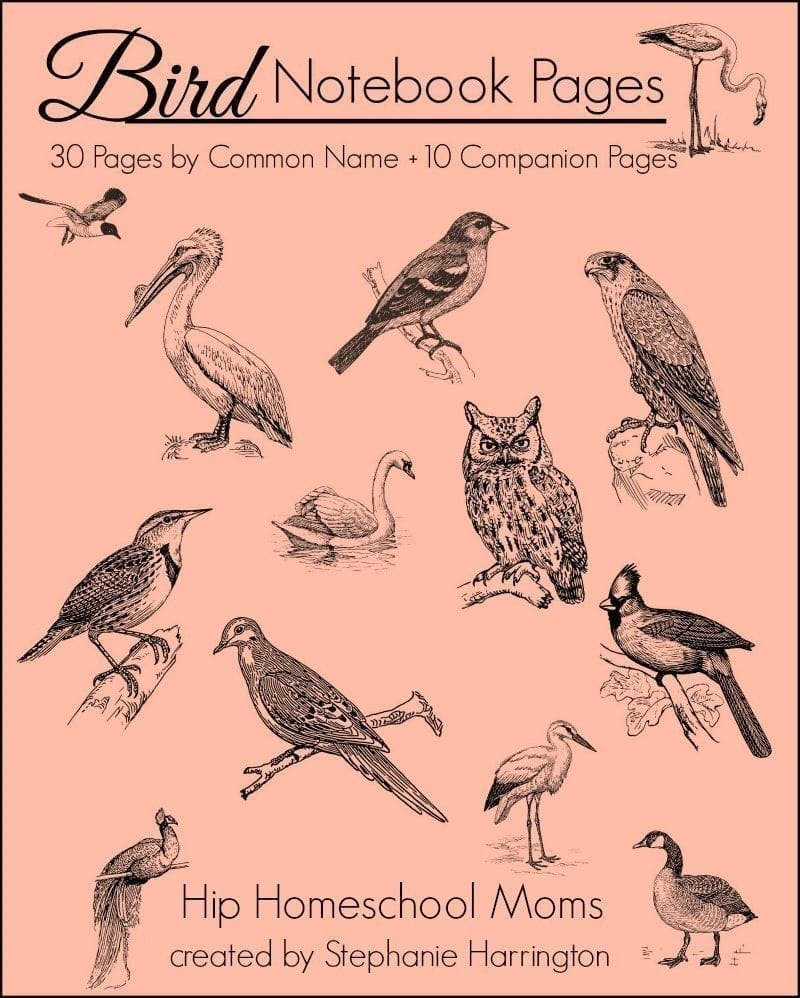


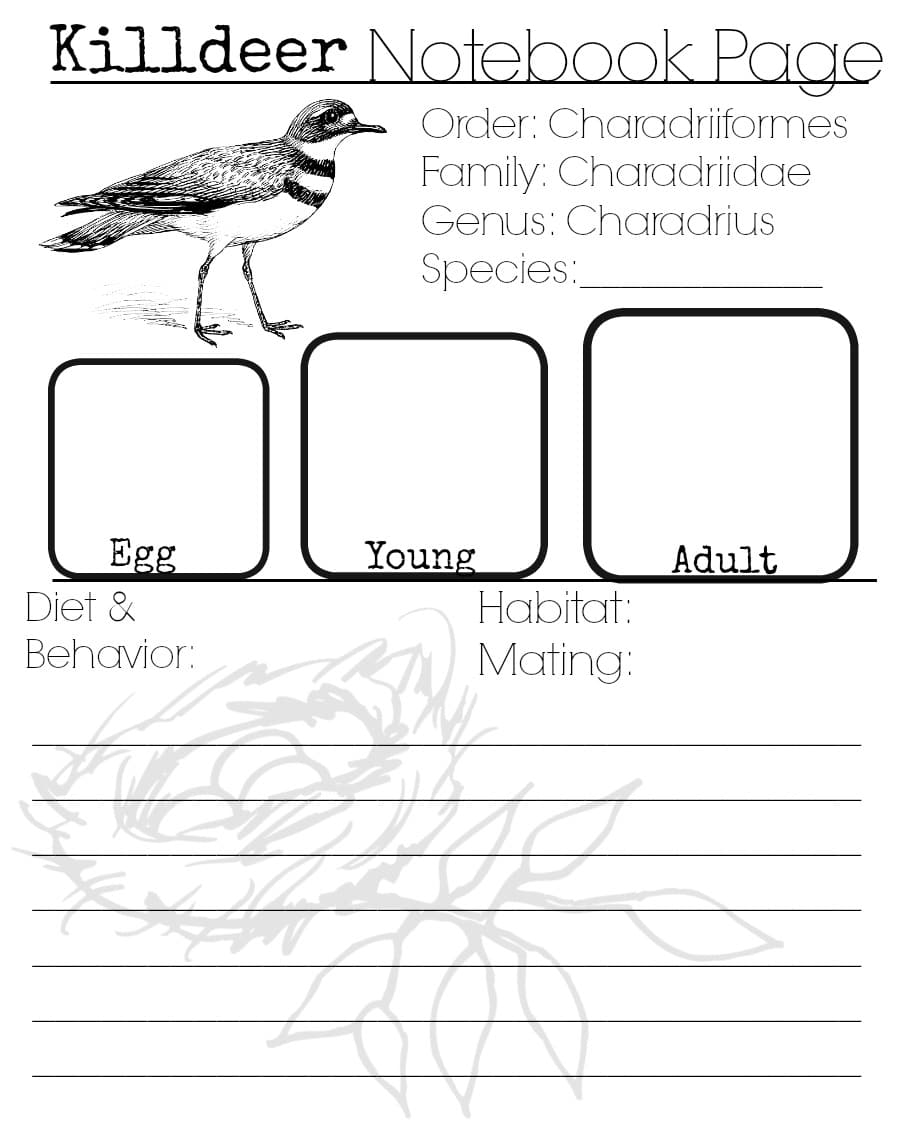
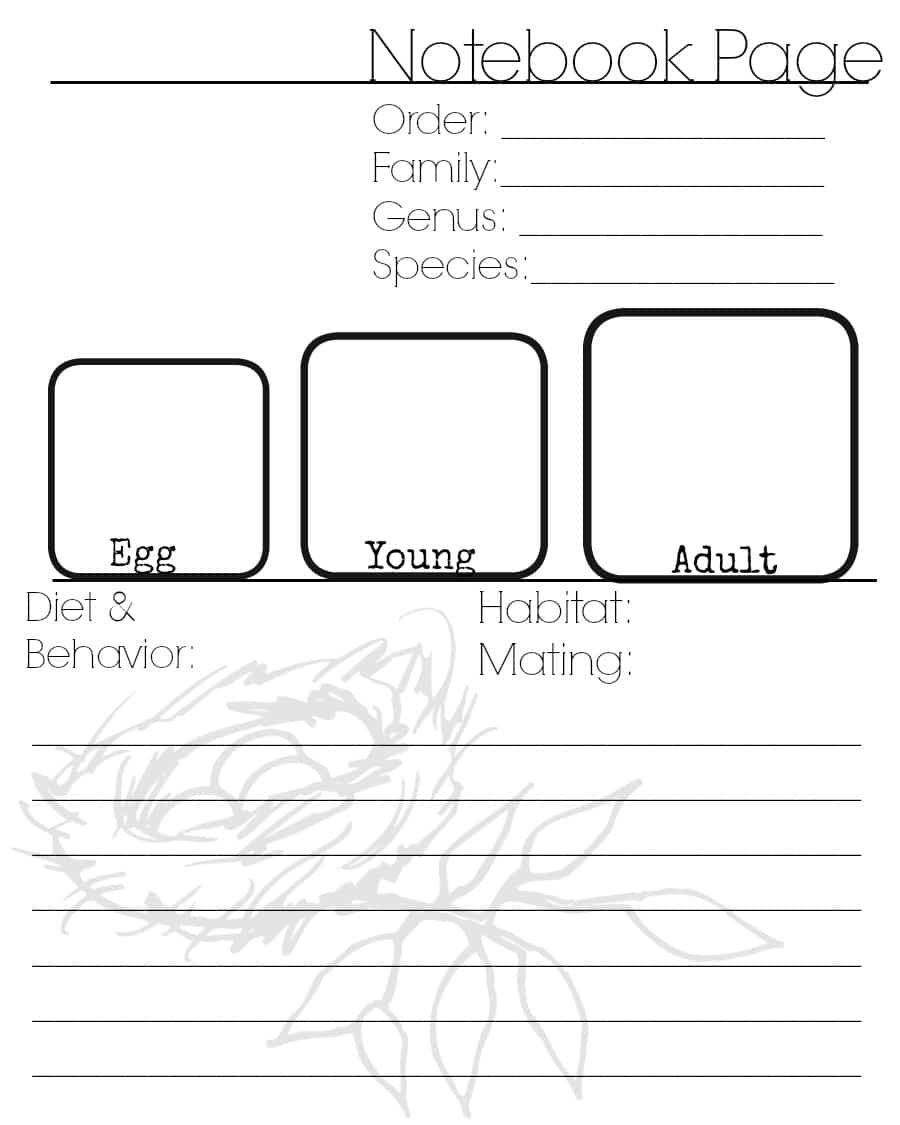

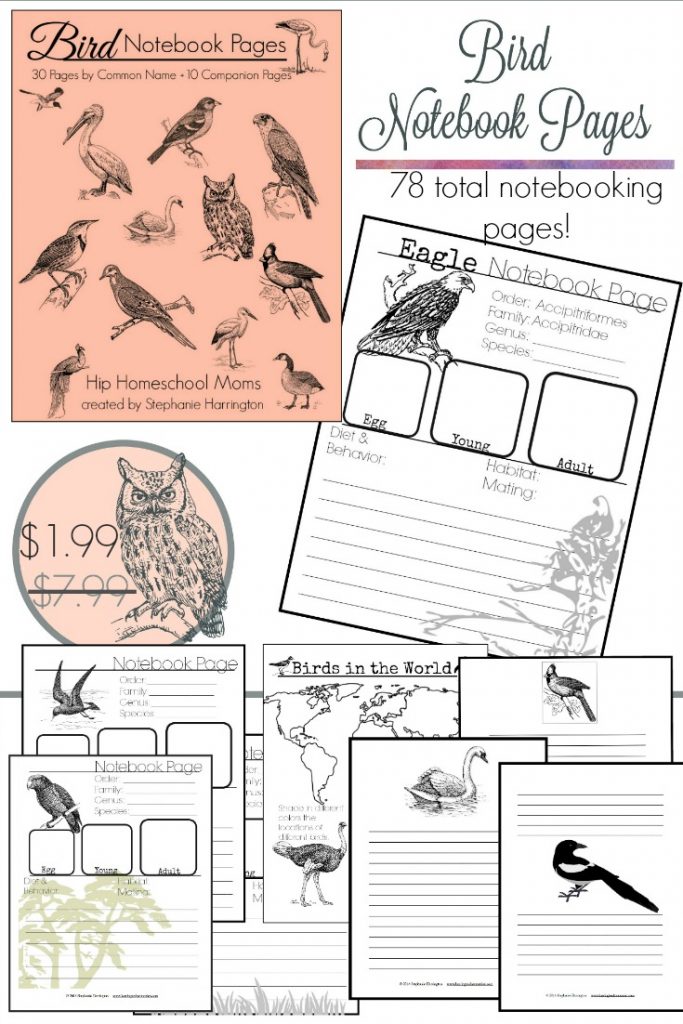

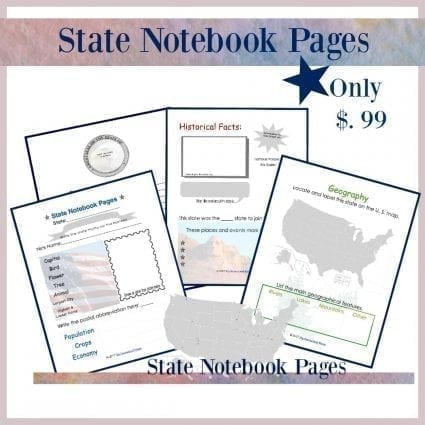


Reviews
There are no reviews yet.